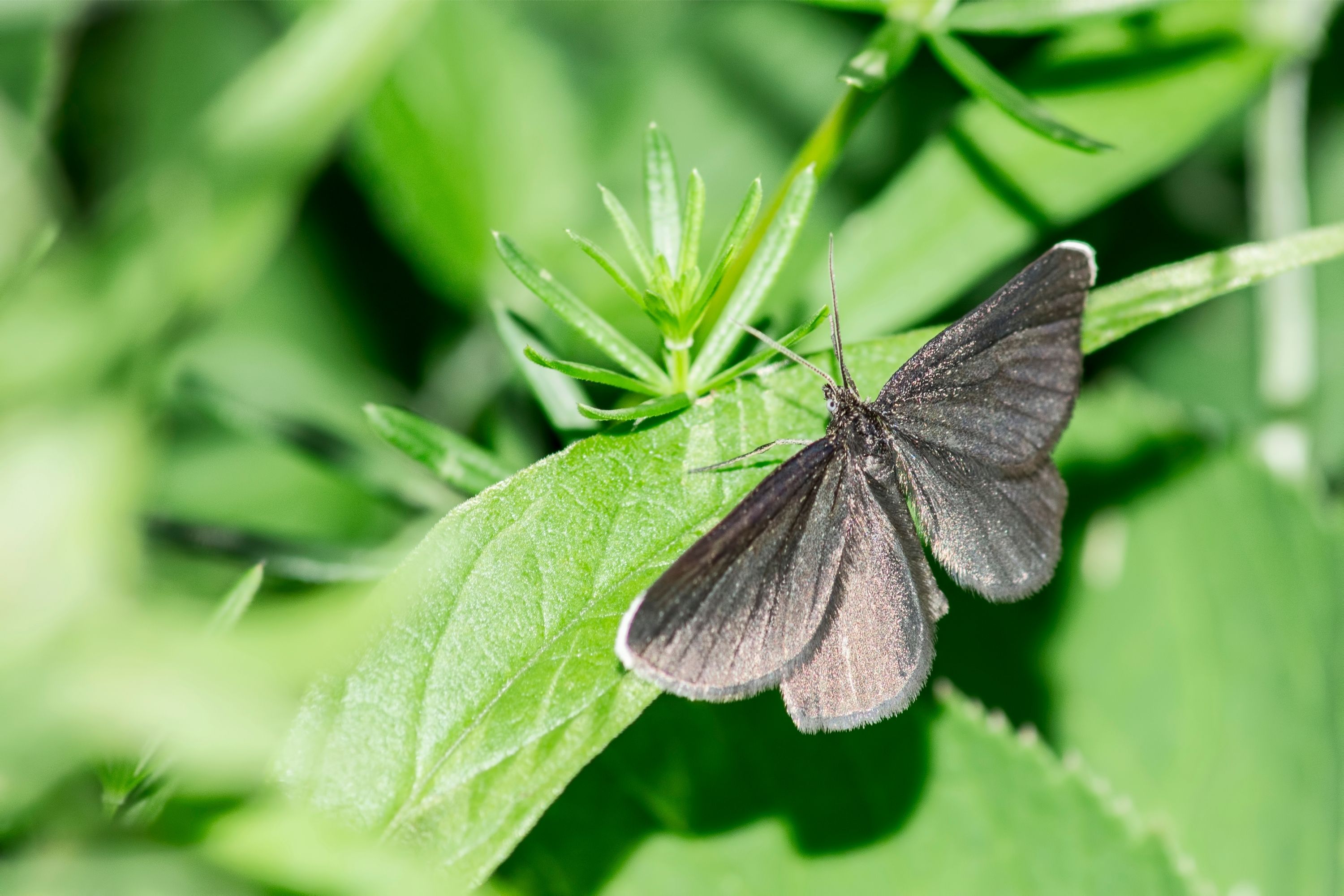Small blue
(Cupido minimus)

Description
The small blue (Cupido minimus) is a Palearctic butterfly in the family Lycaenidae. Despite its common name, it is not particularly blue. The male has some bluish suffusion at the base of its upper wings but is mostly dark brown like the female. The species can live in colonies of up to several hundred and in its caterpillar stage is cannibalistic. Small blue males are dark brown with a scattering of bright blue scales that speckle their wings. Females lack this blue speckling. Both males and females exhibit the characteristic silver underside with black spots. The male has a bluish tint at the base of its wings similar to the upper side.Their wingspan can fall anywhere from 16-27mm, but males tend to be the smaller sex.Small blues are often confused with the female Osiris Blue, whose coloring is similar to that of the male small blue. C. minimus is found in Europe, Asia Minor, Transcaucasia, Tian-Shan, western Siberia, central Siberia, southern Siberia, the Russian Far East, Amur, Mongolia, Magadan and Kamchatka. Recorded larval food plants are Oxytropis campestris, Astragalus alpinus, Lotus corniculatus, Anthyllis vulneraria, Melilotus, Coronilla, Medicago, Anthyllis vulneraria, Astragalus glycyphyllos and Astragalus cicer. In the UK, small blues lay their eggs, live, and feed exclusively on the kidney vetch. While females obtain all of their nutrients from plants, males will extract salts and minerals from carrion, dung, and mud puddles.When courting, males will find a perch on a covered piece of grass or shrub while waiting for females. During this period, males are very territorial of their perch. Virgin females flying by will mate with the males without elaborate courtship. Mated females will attempt to avoid other males by waiting in the grasses out of sight when a male is nearby. After mating, the female will search for a suitable place to lay a single egg, such as a healthy food plant. Once found, she will lay it between two florets on the flower head in order to keep it mostly hidden, and secure the egg. In order to keep other females from laying eggs on the same flower, the female small blue will rub her abdomen against the florets before she leaves to leave a scent marker. The caterpillars are cannibalistic and will eat one another if multiple hatch on the same flower. However, this scent marker will not last more than a few days, so multiple eggs are often found on a plant.
Taxonomic tree:







